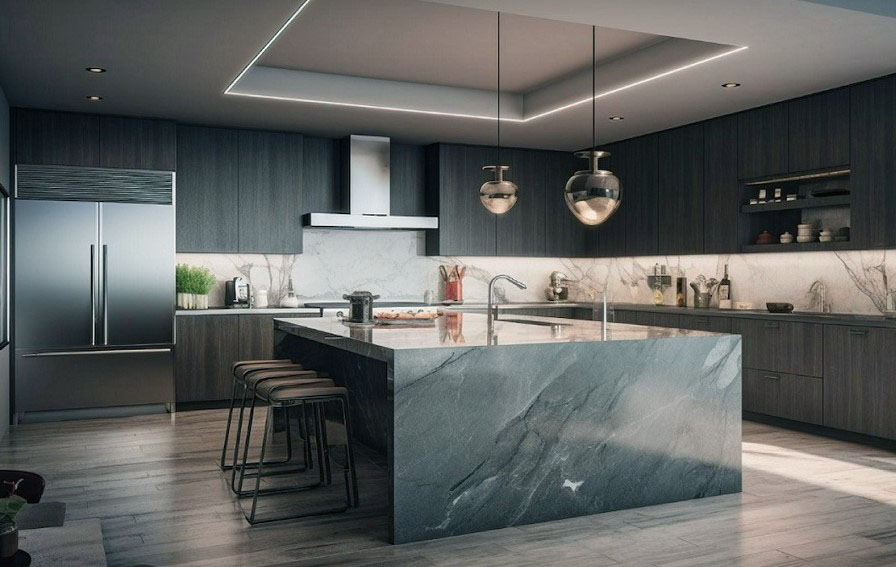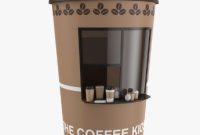The Ultimate Guide to Luxury Kitchen Design: Creating Your Dream Culinary Space
A luxury kitchen is more than just a place to prepare meals; it’s a statement of style, a hub for entertaining, and a sanctuary for culinary creativity. Whether you’re a gourmet chef or someone who simply enjoys cooking in a beautiful environment, designing a luxury kitchen is an exciting opportunity to create a space that reflects your personality and enhances your lifestyle.
In this guide, we’ll explore the key elements of luxury kitchen design, from layout and materials to appliances and lighting. Whether you’re renovating an existing space or building a new one, this comprehensive overview will help you achieve the luxurious kitchen of your dreams.
1. Planning Your Luxury Kitchen Design
1.1. Assessing Your Needs
Before diving into the design process, it’s essential to assess your needs. Consider how you use your kitchen and what features are most important to you. Do you love hosting large gatherings? Do you need professional-grade appliances? Are you looking for ample storage space or a large island for casual dining?
Understanding your lifestyle and cooking habits will help you prioritize the elements that will make your kitchen not only luxurious but also functional.
1.2. Setting a Budget
Luxury kitchen designs can vary significantly in cost, so setting a realistic budget is crucial. Your budget will influence your choice of materials, appliances, and finishes. Remember to allocate funds for unexpected expenses that may arise during the renovation or construction process.
2. Key Elements of Luxury Kitchen Design
2.1. Layout and Flow
A well-designed kitchen layout is the foundation of any luxury kitchen. The layout should promote efficiency and ease of movement, whether you’re cooking for one or entertaining a crowd. Popular luxury kitchen layouts include:
- The U-Shape: Ideal for larger spaces, this layout provides ample counter space and storage while keeping the work triangle compact.
- The L-Shape: A versatile layout that works well in both small and large kitchens, offering an open feel and easy access to all areas.
- The Island: A must-have in many luxury kitchens, an island adds additional workspace, storage, and seating, making it a focal point for both cooking and socializing.
2.2. High-End Materials
The choice of materials is a defining aspect of luxury kitchen design. Premium materials not only enhance the aesthetic appeal of your kitchen but also contribute to its durability and functionality. Consider the following options:
- Countertops: Granite, marble, quartz, and exotic stones are popular choices for luxury countertops. These materials offer a combination of beauty, durability, and heat resistance.
- Cabinetry: Custom cabinetry made from high-quality wood such as walnut, cherry, or oak adds a touch of elegance to your kitchen. Consider features like soft-close doors, integrated lighting, and pull-out shelves for added convenience.
- Backsplashes: A luxury kitchen backsplash can be a work of art. Options like mosaic tiles, glass, stainless steel, or even hand-painted tiles can create a striking visual impact.
2.3. State-of-the-Art Appliances
Luxury kitchens are often equipped with state-of-the-art appliances that blend style with functionality. Here are some must-have appliances for a high-end kitchen:
- Professional-Grade Range: A professional-grade range with multiple burners, a griddle, and a convection oven is a centerpiece in many luxury kitchens. Brands like Wolf, Viking, and Thermador are popular choices.
- Built-In Refrigerator: A built-in refrigerator offers a seamless look and is available in various sizes and configurations. Sub-Zero and Miele are top brands that offer customizable options.
- Wine Cooler: For wine enthusiasts, a dedicated wine cooler or cellar is a luxurious addition that keeps your collection at the perfect temperature.
- Dishwasher: A quiet, energy-efficient dishwasher with advanced cleaning capabilities ensures that your kitchen remains pristine after every meal.
2.4. Lighting
Lighting is a critical component of luxury kitchen design, setting the mood and highlighting key features. Layered lighting, which includes ambient, task, and accent lighting, creates a warm and inviting atmosphere. Consider the following options:
- Chandeliers: A chandelier above the island or dining area adds a touch of glamour and serves as a focal point.
- Pendant Lights: Pendant lights over the island or countertops provide task lighting while adding style and sophistication.
- Under-Cabinet Lighting: Under-cabinet lighting illuminates workspaces and enhances the overall ambiance.
2.5. Smart Technology
Integrating smart technology into your luxury kitchen can enhance convenience and efficiency. From touchless faucets to voice-activated appliances, smart technology offers endless possibilities. Consider incorporating the following:
- Smart Refrigerators: With built-in cameras, touch screens, and voice control, smart refrigerators keep your groceries organized and your family connected.
- Smart Ovens: Smart ovens offer remote control, automated cooking settings, and even recipe suggestions, making meal preparation easier than ever.
- Home Automation Systems: Control your kitchen’s lighting, temperature, and appliances from your smartphone or tablet with a home automation system.
3. Incorporating Personal Style
While luxury kitchen design is about high-end materials and appliances, it’s also about reflecting your personal style. Whether you prefer a modern, minimalist look or a classic, traditional feel, your kitchen should be a space that resonates with you. Here are some tips to infuse your personality into the design:
3.1. Color Scheme
Choose a color scheme that complements your style and the overall aesthetic of your home. Neutral tones like white, gray, and beige are timeless and create a clean, sophisticated look. For a bolder statement, consider deep blues, greens, or even black, paired with metallic accents.
3.2. Unique Features
Add unique features that set your kitchen apart. This could be a custom range hood, a statement backsplash, or a handcrafted island. These details add character and make your kitchen one-of-a-kind.
3.3. Artwork and Decor
Incorporating artwork and decor can personalize your space and make it feel more like home. Consider displaying framed prints, sculptures, or decorative items that resonate with you.
4. Maximizing Functionality and Storage
Luxury kitchen design is not just about aesthetics; it’s also about functionality. Ample storage and efficient organization are key to creating a kitchen that works for you.
4.1. Custom Storage Solutions
Custom storage solutions like pull-out pantry shelves, deep drawers, and integrated spice racks can help keep your kitchen organized and clutter-free. Consider adding a walk-in pantry or a butler’s pantry for additional storage.
4.2. Optimizing Workflows
Design your kitchen layout to optimize workflows. The “work triangle” concept, which connects the sink, stove, and refrigerator, is a time-tested layout that promotes efficiency. Additionally, consider placing frequently used items within easy reach and grouping similar items together.
4.3. Island Functionality
The kitchen island is a multifunctional element in luxury kitchens. It can serve as a prep area, a dining spot, and even a storage solution. Consider incorporating features like a sink, additional storage, or seating into your island design.
5. Sustainability in Luxury Kitchen Design
As sustainability becomes increasingly important, incorporating eco-friendly elements into your luxury kitchen design is both stylish and responsible.
5.1. Energy-Efficient Appliances
Choose energy-efficient appliances that reduce your carbon footprint and save on utility bills. Look for appliances with the ENERGY STAR label, which meet strict energy efficiency guidelines.
5.2. Sustainable Materials
Opt for sustainable materials like reclaimed wood, recycled glass, and low-VOC (volatile organic compounds) finishes. These materials not only reduce environmental impact but also contribute to a healthier indoor environment.
5.3. Water Conservation
Incorporate water-saving fixtures like low-flow faucets and dual-flush toilets into your kitchen design. These fixtures reduce water consumption without sacrificing performance.
6. Conclusion
Designing a luxury kitchen is an exciting opportunity to create a space that combines elegance, functionality, and personal style. By focusing on key elements like layout, materials, appliances, and lighting, you can create a kitchen that is not only beautiful but also tailored to your needs and lifestyle.
Whether you’re building from scratch or renovating an existing space, the possibilities for creating a luxury kitchen are endless. With thoughtful planning, attention to detail, and a focus on quality, you can design a kitchen that is truly the heart of your home.




